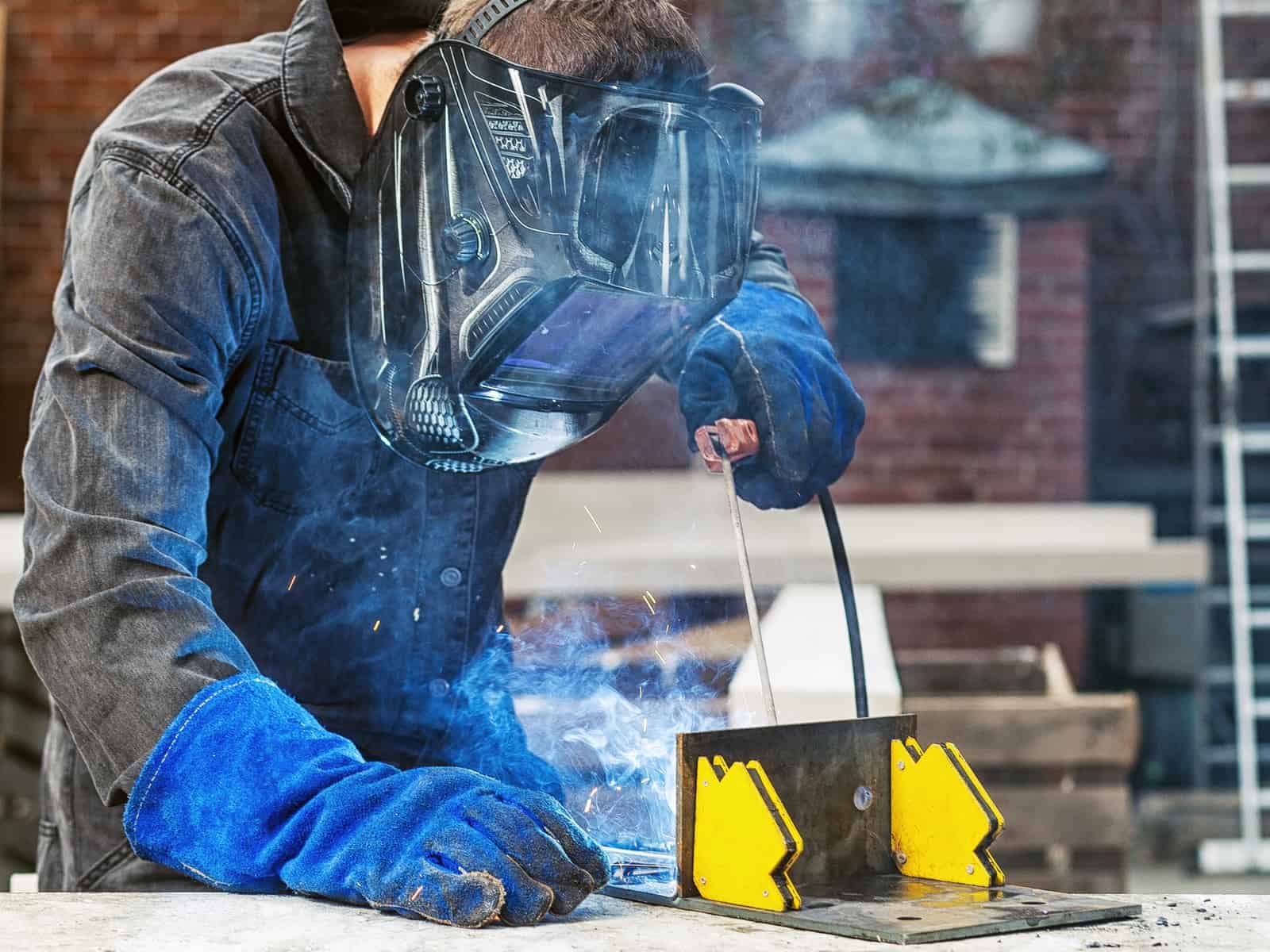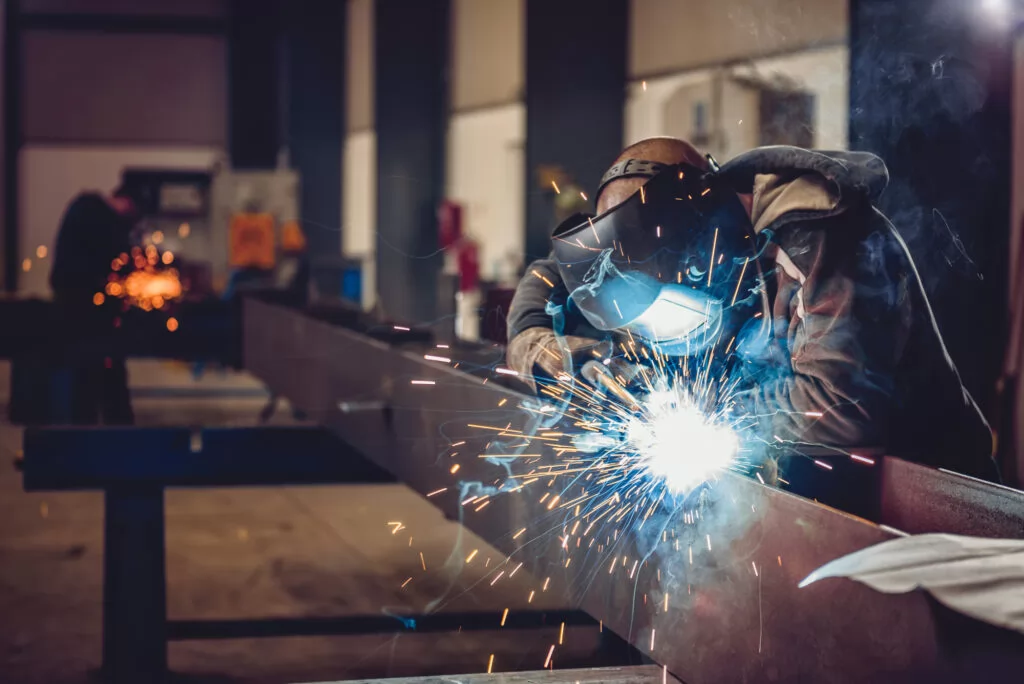Common Welding Fixing Issues and How to Address Them Successfully
Welding fixings typically encounter a variety of concerns that can threaten the stability of the end product. Usual issues consist of insufficient infiltration, porosity, and misalignment, among others. Each problem presents special difficulties that call for details approaches for resolution. Recognizing these concerns is essential for welders aiming to boost their end results and abilities. This conversation will certainly check out these common welding repair work issues and efficient techniques to address them.
Poor Infiltration
Poor infiltration occurs when the weld steel stops working to totally fuse with the base material, leading to weak joints and potential architectural failures. This problem often comes from insufficient heat input, wrong electrode angle, or inappropriate welding rate. Welders may experience insufficient penetration as a result of a miscalculation of the needed criteria for a details product density or kind. In addition, contamination on the base material's surface area can prevent reliable bonding, exacerbating the trouble. To attend to insufficient penetration, welders must ensure proper settings on their devices and preserve a tidy work surface. Normal examination of welds is suggested to determine any shortages early, enabling for prompt improvements and the prevention of jeopardized architectural stability in bonded settings up.
Porosity
Porosity is a common flaw in welded joints that shows up as little gas bubbles caught within the weld metal. This problem can compromise the honesty of the weld, causing minimized stamina and prospective failing under stress and anxiety. Welding. Porosity typically arises from contamination, moisture, or improper welding strategies, which permit gases to run away into the molten weld swimming pool. To deal with porosity, welders need to guarantee appropriate surface preparation, keep a tidy workplace, and utilize appropriate welding parameters. In addition, picking the ideal filler material and protecting gas can reduce gas entrapment. Routine examination and screening of welds can assist identify porosity early, guaranteeing prompt restorative actions are taken, therefore protecting the top quality and reliability of the bonded framework
Imbalance
Misalignment in welding can emerge from various factors, including incorrect configuration and thermal growth. Understanding the origin is essential for reliable resolution. A number of adjustment strategies are readily available to realign elements and assure architectural honesty.
Causes of Misalignment
Welding misalignment usually comes from a variety of underlying concerns that can endanger architectural integrity. One primary cause is inappropriate fit-up of parts prior to welding, which can cause gaps and unequal surface areas. Variations in thermal development throughout the welding process can likewise cause distortion, particularly if the materials being signed up with have various coefficients of growth. Furthermore, inadequate clamping and fixturing might fail to hold parts securely in location, causing movement throughout welding. Poorly kept devices, consisting of welding makers and devices, might introduce inconsistencies in the weld grain, more contributing to imbalance. Operator error, stemming from insufficient training or experience, can additionally play a substantial duty in developing misaligned welds.

Modification Techniques Available
Resolving imbalance efficiently requires a combination of corrective techniques tailored to the details issues available. One common technique is making use of fixtures or jigs to hold parts in the appropriate setting during welding, making certain regular alignment. Additionally, preheating the materials can help in reducing distortion and boost fit-up. For significant misalignment, mechanical realignment methods, such as using hydraulic jacks or clamps, can be used to correct the setting before welding. Post-weld warm therapy might also be essential to ease stresses brought on by imbalance. Mindful examination and adjustment during the arrangement stage can protect against misalignment concerns from ending up being substantial problems, promoting a smoother welding procedure and boosting general structural honesty.
Distortion
Distortion is a typical obstacle in welding that can develop from different variables, consisting of unequal cooling and heating. Recognizing the root causes of distortion is necessary for carrying out reliable prevention strategies. Resolving this issue not just enhances architectural integrity however likewise boosts the general top quality of the weld.
Reasons for Distortion
When based on the intense heat of welding, products frequently undertake changes that can cause distortion. This sensation primarily develops from thermal expansion and tightening during the welding procedure. As the weld area heats up, the product increases; upon air conditioning, it gets, which can create internal stress and anxieties. On top of that, unequal home heating across a workpiece can aggravate these anxieties, leading to warping or bending. The sort of material also plays a significant function; steels with differing thermal conductivity and coefficients of expansion might react differently, bring about unpredictable distortions. Poor joint layout and inadequate fixturing can contribute to misalignment throughout welding, raising the chance of distortion. Understanding these causes is essential for reliable welding repair and avoidance strategies.
Avoidance Techniques
Effective prevention techniques for distortion during welding concentrate on managing heat input and making sure proper joint design. Preserving a constant warm input aids to lessen thermal expansion and tightening, which can bring about distortion. Using techniques such as preheating the work surface can also lower the temperature gradient, promoting consistent home heating. In addition, picking suitable joint layouts, such as T-joints or lap joints, can enhance security and lower stress concentrations. Executing appropriate fixturing to safeguard the work surfaces in location further help in preserving alignment during the site welding procedure. Finally, staggered welding series can distribute heat more evenly, stopping local distortion. By using these approaches, welders can greatly reduce the probability of distortion and boost the general quality of their welds.
Breaking
Cracking is a typical problem encountered in welding repair work, commonly resulting from various variables such as incorrect air conditioning prices, product selection, or inadequate joint preparation. The event of fractures can greatly compromise the honesty of the weld, causing possible failures throughout operation. To address this problem, welders should initially evaluate the origin, making sure that products are suitable and properly selected for the details application. Furthermore, regulating the cooling price during the welding process is vital; fast cooling can induce anxiety and cause fracturing. Correct joint layout and preparation additionally add to reducing the danger. Applying these methods can improve weld top quality and resilience, eventually minimizing the likelihood of cracking in completed weldments.

Incomplete Fusion
A substantial concern in welding repair services is incomplete fusion, which happens when the weld steel does not effectively bond with the base product or previous weld passes - Belgrade Fabrication. This see this website issue can result in weaknesses in the joint, possibly jeopardizing the integrity of the welded structure. Elements adding to incomplete combination include inadequate warm input, improper welding method, and contamination of the surfaces being joined. To address this concern successfully, welders need to assure proper pre-weld cleaning and surface area prep work, along with adjust their welding criteria to accomplish adequate penetration and fusion. Regular examination during the welding process can likewise help recognize insufficient blend early, allowing for timely rehabilitative actions to enhance the overall high quality of the weld
Overheating
While welding repairs can improve architectural honesty, overheating presents a considerable obstacle that can result in product deterioration. Too much warm throughout welding can alter the mechanical properties of steels, resulting in lowered toughness, raised brittleness, and bending. This phenomenon is specifically important in high-stress applications where architectural dependability is paramount. Recognizing overheating can involve visual inspections for staining or distortion, in addition to checking temperature throughout the welding process. To minimize the risks related to overheating, welders must employ proper strategies, such as controlling heat input, adjusting travel speed, and making use of suitable filler products. Additionally, applying pre- and post-weld warm treatments can aid recover material residential or commercial properties and boost the general top quality of the repair work, making certain long-term performance and safety and security.
Often Asked Inquiries
What Are the Usual Signs of a Welding Issue?

How Can I Examine My Welds for Top quality?
To examine welds for top quality, one can use aesthetic inspections, ultrasonic testing, and radiographic techniques. Each method assures structural stability, recognizes flaws, and validates adherence to specified standards, eventually enhancing the reliability of the bonded joints.
What Security Safety Measures Should I Take While Welding?
When welding, one need to prioritize safety and security by using suitable individual protective equipment, guaranteeing appropriate ventilation, securing combustible materials away, preserving a tidy work space, and understanding surroundings to stop mishaps and injuries.
Can I Repair a Weld Without Redesigning the Entire Joint?
Fixing a weld without remodeling the whole joint is feasible, depending upon the damage (Montana Mobile more tips here Welding and Repair Fabrication). Strategies such as grinding, adding filler product, or making use of a welding process can successfully resolve specific imperfections while protecting the surrounding framework
What Devices Are Crucial for Effective Welding Repairs?
Important tools for effective welding repair services include a welding equipment, wire brush, grinder, safety equipment, clamps, and filler materials. Each tool plays an essential role in ensuring top quality and safety and security throughout the repair work process. Porosity commonly emerges from contamination, dampness, or inappropriate welding techniques, which enable gases to run away into the liquified weld pool. Badly conserved tools, consisting of welding machines and tools, may introduce disparities in the weld bead, more adding to imbalance. When subjected to the extreme heat of welding, products often undertake modifications that can lead to distortion. Splitting is an usual issue come across in welding repairs, commonly resulting from different elements such as inappropriate cooling rates, product choice, or poor joint preparation. A considerable problem in welding repairs is insufficient combination, which occurs when the weld metal does not effectively bond with the base product or previous weld passes.